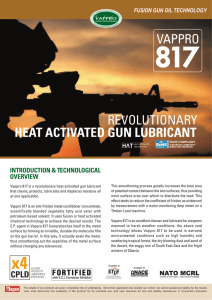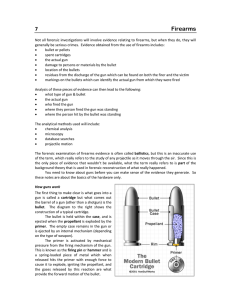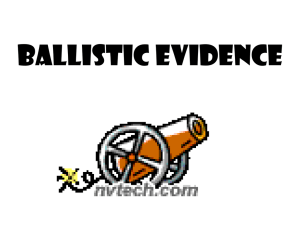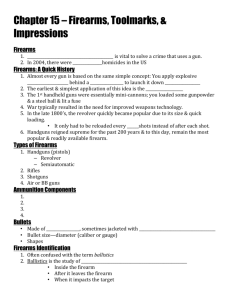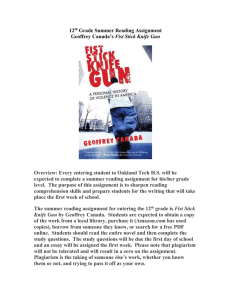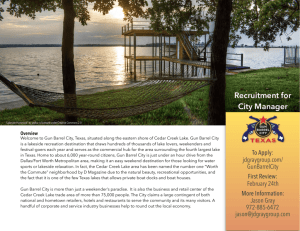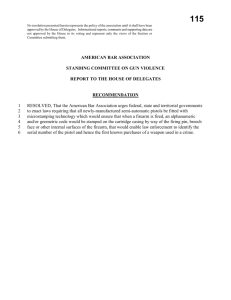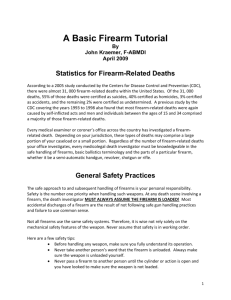ballistics ch 15
advertisement
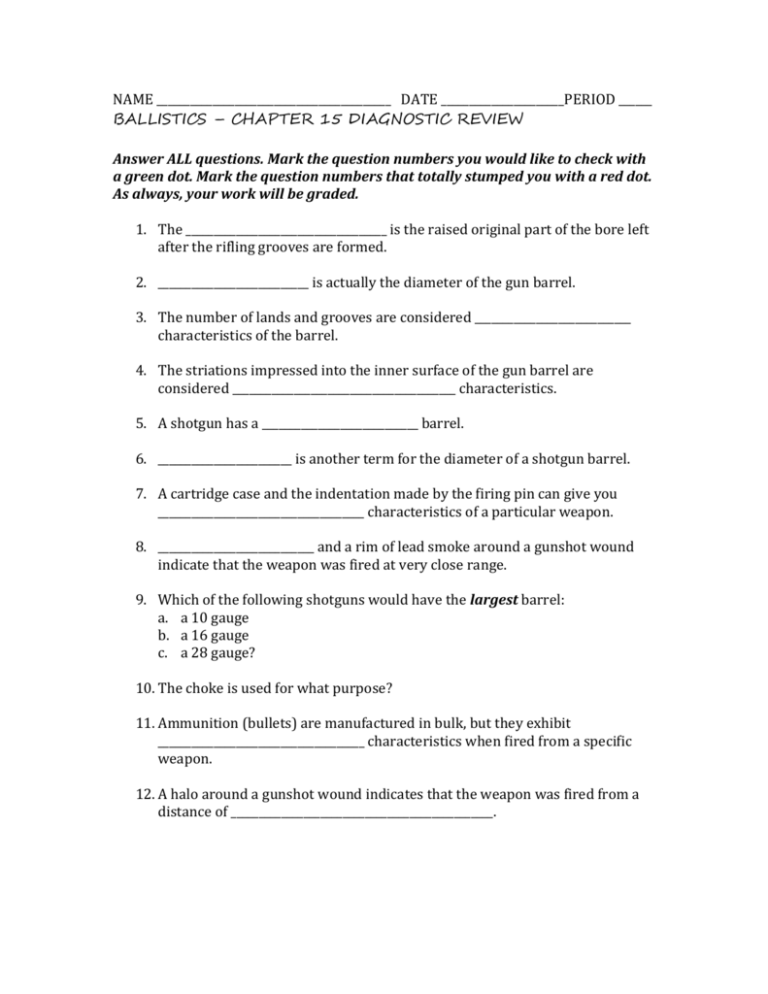
NAME __________________________________________ DATE ______________________PERIOD ______ BALLISTICS – CHAPTER 15 DIAGNOSTIC REVIEW Answer ALL questions. Mark the question numbers you would like to check with a green dot. Mark the question numbers that totally stumped you with a red dot. As always, your work will be graded. 1. The ____________________________________ is the raised original part of the bore left after the rifling grooves are formed. 2. ___________________________ is actually the diameter of the gun barrel. 3. The number of lands and grooves are considered ____________________________ characteristics of the barrel. 4. The striations impressed into the inner surface of the gun barrel are considered ________________________________________ characteristics. 5. A shotgun has a ____________________________ barrel. 6. ________________________ is another term for the diameter of a shotgun barrel. 7. A cartridge case and the indentation made by the firing pin can give you _____________________________________ characteristics of a particular weapon. 8. ____________________________ and a rim of lead smoke around a gunshot wound indicate that the weapon was fired at very close range. 9. Which of the following shotguns would have the largest barrel: a. a 10 gauge b. a 16 gauge c. a 28 gauge? 10. The choke is used for what purpose? 11. Ammunition (bullets) are manufactured in bulk, but they exhibit _____________________________________ characteristics when fired from a specific weapon. 12. A halo around a gunshot wound indicates that the weapon was fired from a distance of _______________________________________________. 13. Label this cross section of a gun barrel with the appropriate terms: 14. Rifling is produced by which part of gun production? 15. Which of the following items would NOT be expected to show any impressions or striations? a. spent-cartridge casing from a handgun b. bullet removed from a victim’s body c. shotgun pellet d. All of the above would be expected to show markings. 16. The TWO elements that are currently most often identified in a gunshot residue test are: a. copper; zinc b. nitrates; antimony c. barium; antimony d. lead; copper 17. Which one of the following statements is CORRECT? a. A Greiss test can match a spent cartridge to a specific gun. b. The diameter of the bore of a rifled gun is its gauge. c. Scattered grains of deposited around a bullet hole indicates the gun was fired a less than an inch away. d. The comparison microscope is the most important instrument for analysis available to the forensic ballistic expert. 18. If a gun is recovered from a crime scene, which of the following choices would NOT be standard operating procedure? a. Test firing the recovered weapon for comparison. b. Avoid inserting a stick or pencil into the barrel of the weapon. c. Making certain that the weapon is unloaded before sending to the laboratory. d. Marking an empty spent-cartridge case on the base for identification. 19. Describe how the Greiss test is performed. Then name and describe THREE other techniques that can determine whether an individual has recently fired a weapon. 20. The picture on the right shows which of the following? a. a spent shotgun shell b. the firing pin mark on an ejected bullet casing c. the lands on a spent bullet casing d. the grooves on a spent bullet casing 21. Define the term “blow back” and explain what it is made of. 22. Many weapons discovered have serial numbers that are obliterated by grinding, rifling or punching. Is it possible to restore the serial numbers? Explain why it is or isn’t possible. 23. What is the preferred location for the investigator to place his/her initials on a spent cartridge casing collected as evidence at a crime scene? 24. Where would you place the identification label/tag on a recovered weapon? 25. List the location of the __________ NIBIN stations available to law enforcement in New Jersey.

